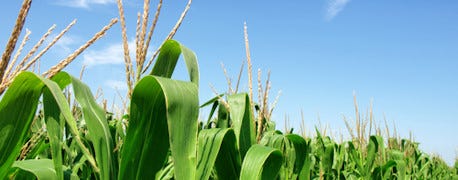May 13, 2013

This won't come as a surprise to any corn-raising reader of this website, but we'll say it anyway - you're behind. According to the latest Crop Progress Report from USDA only 28% of the corn is planted across all 18 key producing states. That's less than half the 65% usually planted by now.
But farmers are catching up as weather gets better. Illinois jumped from 7% planted to 17% in a week; Indiana tripled planted corn acres from 8% to 30% from one reporting period to the next. Iowa nearly doubled its planted acres from 8% to 15%. When the weather is right U.S. farmers can plant a lot of corn. But weather worries continue. Drier weather this week may make a big difference.

SLOWLY BUT SURELY: As weather clears farmers make planting progress on the 2013 corn crop...but it's slow going.
Corn emergence is also lagging with just 5% of the crop out of the ground when 28% is usually out over the five-year average. Last year at this time 52% of the corn was out of the ground, but you know what the drought did to that. Key corn producing states have very little emergence - Iowa at 1%, Illinois and Nebraska at 2%, Indiana at 3% (let the bragging begin).
Meanwhile, soybean planting is behind as well with only about one-fourth the number of acres planted versus what is normally done based on the five-year average. In fact, Illinois reports no acres of soybeans planted yet while Indiana has 6% in and Iowa has planted 1% of its acres. Southern states with soybeans are well on their way, but they also remain behind.
Cotton planting, though delayed, is moving along. So far 23% of the cotton acres are planted versus 38% in a normal year. Good progress as weather gives those producers a break, but challenges remain. Only California is ahead of the five-year average.
Keep up with crop conditions and yield estimates on the Farm Futures Statistical Tables and Charts page.
About the Author(s)
You May Also Like






